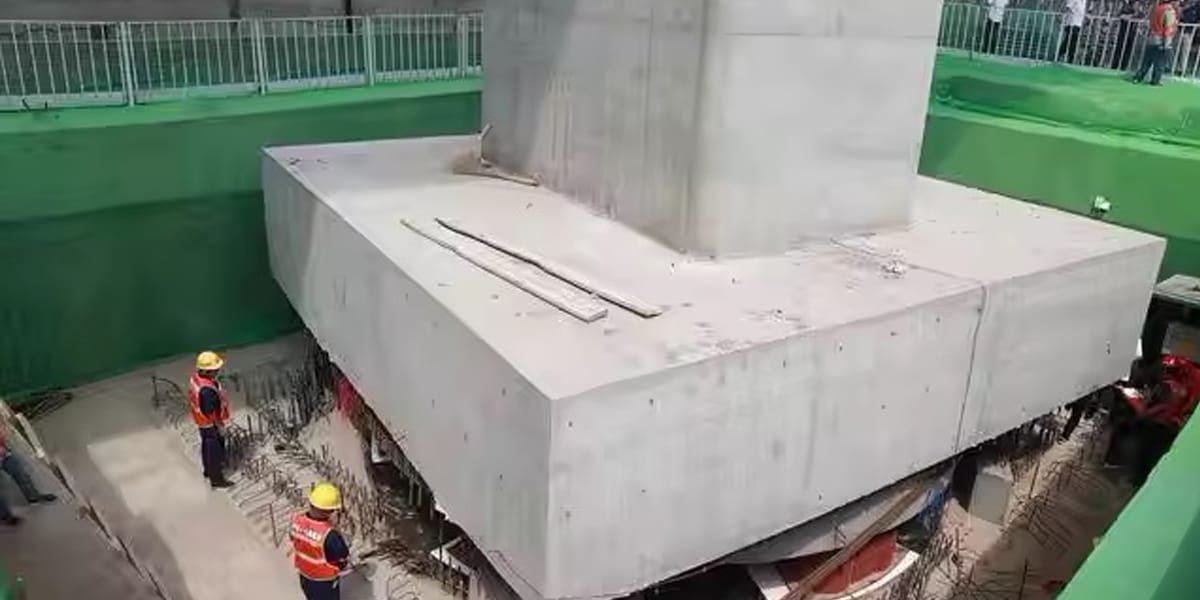
17 Dec What are the Three Types of Foundations?
Foundations are an important part of any construction project. But, each project comes with different complexities like soil conditions and environmental stress. The question is, “Can every kind of foundation be used for every project?” Well, it depends.
There are 3 kinds of foundations such as shallow, deep, and specialized foundations. Choosing the right one ensures longevity and desired results.
In this article, we are going to talk about three types of foundations in detail. Further, we’ll also discuss the right kind of foundation as per your application.
Types of foundations in a Construction Project
Let’s explore each type of foundation used in the construction industry based on various factors. These are mainly differentiated on the basis of depth in the soil and mechanism to shift weight.
Shallow Foundation
This is the most common kind of construction foundation. These are used in places where the soil near the surface is strong enough to support the structure. These foundations transfer the distributed weight of soil near the surface. This is mainly used for projects where the structure is less than 6 feet deep. Shallow foundations can be further classified into subcategories:
(I) Mat Raft Foundations
A raft foundation, or mat foundation, is a large concrete slab that supports the whole building. It spreads the weight evenly across the slab, which is why it is of high strength.
It’s often used for basements, large buildings, or areas where regular foundations might not work. It can support multiple columns and walls at once.
(II) Spread Foundations
It is yet another type of shallow foundation that has a wider base. Because of the wide base, these are used to support columns or posts. Another benefit of the wide base is that it can easily distribute the weight in columns, enhancing the structural integrity.
These prevent moisture from being absorbed into the structure, which may weaken it otherwise. Because of its great design and strength, these are used to make masonry or residential columns.
(III) Crawl Space Foundation
A crawl space is a type of foundation where there’s a small, open space between the ground and the floor of the building. It’s tall enough to crawl through. This space helps with airflow and allows easy access to plumbing and wires under the house. It’s often used in areas that might flood or where a full basement isn’t needed.
Deep Foundation
Unlike shallow foundations, these foundations transfer the structure’s entire weight to the bedrock. It can go about 250 feet deep to provide structural integrity to the structure. These can be used to make skyscrapers, high-rise apartments, and other high-performance buildings. Let us talk about some types of deep foundations.
(I) Pile Foundations
In this kind of foundation, long cylinders-like piles are erected on the concrete slab. This kind of foundation design works best when you need to transfer the weight to the deeper layers of soil. Depending on the project’s needs, builders use steel or wood to make pillars to support their structure.
(II) Caissons Foundations
To support high-performance structures, you need a foundation with greater load-bearing capacity. Although similar to a pile foundation, caisson foundations are larger and used in situations where piles can’t reach depth. They are driven deep into the ground to reach solid bedrock or firm soil.
They provide a stable base for heavy structures like bridges and piers buildings. For very high-performance applications, you can rely on the root-caisson foundation. This is because the load-bearing capacity is 20% higher than traditional caisson.
(III) Buoyant Foundations
In high-flood-prone areas, you can not use traditional or any other kinds of foundations. Hence, buoyant foundations are an ideal option to consider. Here, the house is lifted using small pillars above a certain distance so that it remains protected from water. This kind of foundation is also used in areas where the soil quality is very low.
Specialized Foundations
Large commercial buildings have different requirements for strength and durability. To meet these needs, specialized foundations are used. Let us talk about these in detail.
(I) Strip Foundations
For commercial warehouses, a strip foundation is a common and practical choice. These foundations consist of long, continuous strips of concrete that support the walls of the building. They help evenly distribute the weight of the warehouse across the ground.
Strip foundations suit commercial warehouses built on stable soil because they are cost-effective. They provide strong support for large spaces that need to withstand heavy loads, such as storage racks and machinery.
This type of foundation is also easier to maintain, as it’s less prone to cracking or shifting compared to more complex foundations.
Comparing Three Types of Foundations
Here’s a detailed comparison of different types of foundations:
| Foundation Type | Soil Conditions | Typical Structures |
| Shallow Foundation | Stable, firm soil | Houses, low-rise buildings |
| Mat Raft Foundation | Weak or inconsistent soil | Skyscrapers, large commercial buildings, hospitals |
| Spread Foundation | Firm or moderately stable soil | Single-family homes, smaller commercial properties |
| Crawl Space Foundation | Stable or low-lying soil | Homes, small buildings in flood-prone areas |
| Deep Foundation | Unstable, soft, or compressible soil | Skyscrapers, bridges, waterfront structures |
| Pile Foundation | Soft or deep layers of weak soil | Skyscrapers, piers, offshore rigs |
| Caisson Foundation | Deep, firm bedrock or stable soil layers | Bridges, piers, docks, large infrastructure projects |
| Buoyant Foundation | Poor soil, high water table | Houses, buildings in flood zones |
| Specialized Foundation | Varies based on project needs | Sports stadiums, factories, custom-designed buildings |
| Strip Foundation | Stable, firm soil | Warehouses, retail stores, smaller buildings |
Conclusion
Here are the three kinds of foundations used in the construction sector. Each of these foundations suits specific applications. For residential buildings, shallow foundations may be an ideal choice. But for commercial ones, you may have to go for deep or special foundations. It’s important to understand that while selecting the foundation for your project, expert advice can be very helpful.
Want to know more about the right foundation for your next construction project?
New Hulian is here to help you!
Get in touch with us today.


